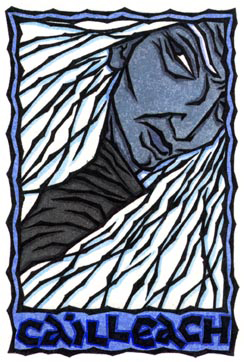|
The Snow Queen in Myth and Literature(continued) By Tala Bar Before the appearance of Andersen's and Lewis's modern (i.e. post
Renaissance) stories, there existed some Medieval folk tales concerning
pagan ideas, which were collected by the Brothers Grimm. But, rather
than referring to a Snow Queen, the "snow" epithet is given
to the queen's rival in the character of a girl called Snow-White. The two main stories in which such a girl is the main character are
"Snow-White
and Rose-Red", and the better known one, "Little
Snow-White". In the first story there are two young sisters,
who live at the edge of a forest and take part in its life. There are
many mentions of the forest in the Grimm's tales, and many characters
live on its outskirts, as on the borderline between the civilized and
the wild. In such a forest, the two girls find a bear, which is revealed
as a prince who had been bewitched by an evil dwarf. Any pagan ideas
which may have been used as a basis for this story are highly corrupt.
The different colors here stand for a peaceful nature opposing a stormy
one, but both girls are considered good and kind. They don't even rival
among themselves for the love of the prince, who marries Snow-White
while her sister marries his brother. As it is, nothing can be learned
from this story except the Christian message that if you are good, you'll
have a happy ending. The other story is very different, and the essence of the myth is quite
evident in it. There is one discrepancy in the names of the protagonist/antagonist:
as according to Christian dogma, the color white signifies a good ("pure")
character, and as such it is given to the girl Snow-White. Her opponent,
as in the later stories, is the wicked queen, but significantly, no
color is attached to her, as her own had been transferred to her rival. In spite of the alteration of color, the characters of the two main
figures in the story is at accord with both Andersen's and Lewis's stories,
and with the ancient myth. The Queen, as befitting a Winter goddess,
is as cold as the snow and, although beautiful (and who would say that
the snow is not beautiful), she is harsh and cruel, as much as trying
in various ways to kill Snow-White. The girl, on the other hand, has
a warm and loving nature, as seen in the way she gets along with the
dwarves and the animals of the forest. The forest itself takes her away
from her civilized life in the Queen's palace, to live close to nature
as the ancient pagans did. But, beside the Christian idea that white
is good, it is the prince, representative of the Christian patriarchal
attitude, who wakes up the girl and not vice versa. Links: Hans
Christian Andersen's Snow Queen |
